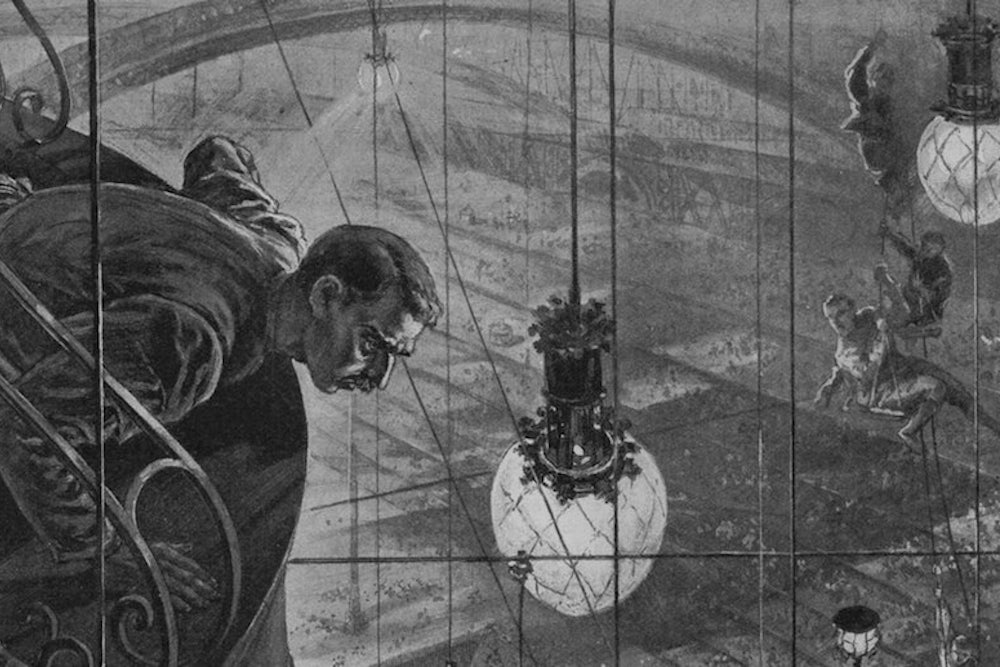The October 1945 edition of Wireless World magazine carried an article from a young Arthur C. Clarke called “Extra Terrestrial Relays.” It was the concept of using satellites in geostationary orbit, 35,786km high, around the Earth, to beam radio signals from one continent to another. Remember Sputnik didn’t go into orbit until October 1957, and that only reached a height of 577km. So in 1945 the article was received as a grand idea, theoretically possible, but by the standards of post WWII rocketry, severely impractical.
Nonetheless, the first communication satellite to use this orbit (now named the Clarke Orbit) was Syncom 3, launched in August 1964—19 years after Clarke’s article. An article which was detailed enough to receive a patent had he sent it to the patent office instead of the magazine. Today, communication satellites are a multi-billion pound industry. Clarke drew together a number of sciences: orbital mechanics, radio design, rocketry, and extrapolated the combination perfectly. It’s one of the best examples of what people see as a science fiction writer’s job: predict the future.
If only it were that easy.
Humans gamble constantly, not just on games of chance, but on how the future will turn out in every aspect of society. We’re fascinated by it. Pollsters have created an entire industry fuelling the insatiable need for politicians to produce their next vote-winning policy. It’s no longer good enough for ministers to jump on a bandwagon as it’s passing, they demand to know what trends are developing below the media horizon before they burst into the 24 hour news cycle. Sample enough people and if you’re lucky you might catch a glimpse of some resentment or aspiration coalescing below the surface of public expression. Congratulations, you’re a pundit.
Future trends are even more important to the money markets. There, chance is squeezed out of the equation as much as is humanly possible. Statistics rule. It’s not just banks that have departments of analysts, there are whole companies who employ nothing but analysts pouring over every detail released by companies in their annual reports and profit warnings. What all of them want is a method that will get them one, or preferably ten, steps ahead of the opposition.
State intelligence agencies, NHS managers, transport authorities, insurance companies. All of them live by scrutinizing evidence from different sources and putting it together to try and gain that glimpse which clairvoyants have been claiming for centuries.
With one interesting omission. In 1939, Robert Heinlein, published his first short story, called “Life-Line.” It was about a man, Professor Piner, who builds a machine that will determine how long a person will live, by sending a signal along the temporal line of that person and detecting the echo from the far end—sort of like a psychic radar. It was infallible, and even knowing the outcome there was no avoiding it. Who wants to know that?
But it's the rest of the future with its quirks, inventions, wars, and triumphs, that we are obsessed with.
As science fiction writers, we design our future fictional worlds by extrapolation. It doesn’t matter what kind of book we’re writing, satire, military, space opera, dystopia, the fundamentals of the society have to be in some way believable. To do this we take what we see around us today, and run with it. The advantage I have over Heinlein and others of his era is that the twentieth century saw a huge acceleration in technological and social development. For us that change has become the norm, we understand and accept our lives are in a constant flux—certainly towards shinier consumer gadgets, and hopefully aiming at a better society. Pre-1940, because valves were the heart of all electrical devices, people assumed valves would remain at the heart. They didn’t have the looking-ahead reflex we seem to have acquired. Today when a new model phone comes out all we can think of is: If that’s what this does, what is the one after going to give us?
So with Clarke’s old article in mind, should us science fiction writers be sending our first drafts to the patent office rather than our editors? Our record in this field is somewhat patchy when it comes to specifics. One of Heinlein’s less fanciful ideas was a water bed, described in his 1942 novel, Beyond This Horizon. The modern waterbed was granted a patent (not to Heinlein) in 1971. H. G. Wells wrote about the land ironclads (tanks) in 1903. And let’s not forget Orwell’s 1984, which put forward the whole concept, and consequences of the surveillance state in despicable detail.
Closer to home for me, November 2013 saw Motorola apply for a patent entitled Coupling An Electronic Skin Tattoo To A Mobile Communication Device. Interesting, considering I was writing about OCtattoos (Organic Circuitry Tattoos) in my 2004 novel Pandora’s Star—which as the concept has now been in the public domain for ten years may well void the Motorola application if anyone ever bothers to challenge it in court.
The simple fact that these examples and a few other notables are practically in single figures sadly gives science fiction the same kind of hit rate as a professional clairvoyant. However, in constantly predicting and even advocating a wealth of futures, we might just have contributed to the expectation that change is constant and volatile. Preparing people to accept that their future is largely unknowable, and having them deal with that, isn’t a bad legacy after all.
This story was originally published on The New Statesman.
